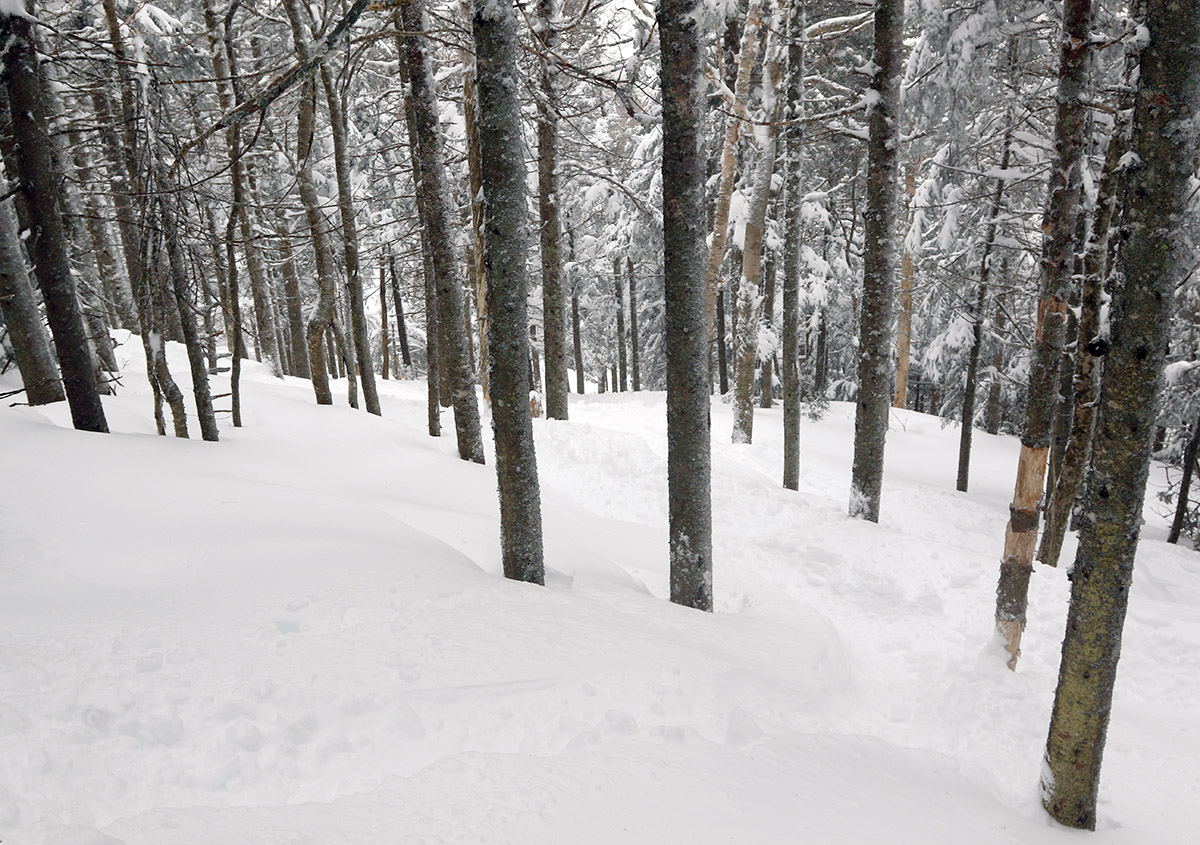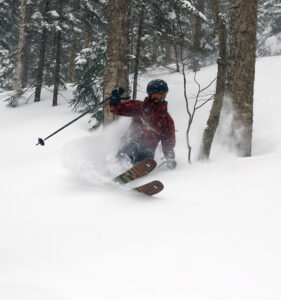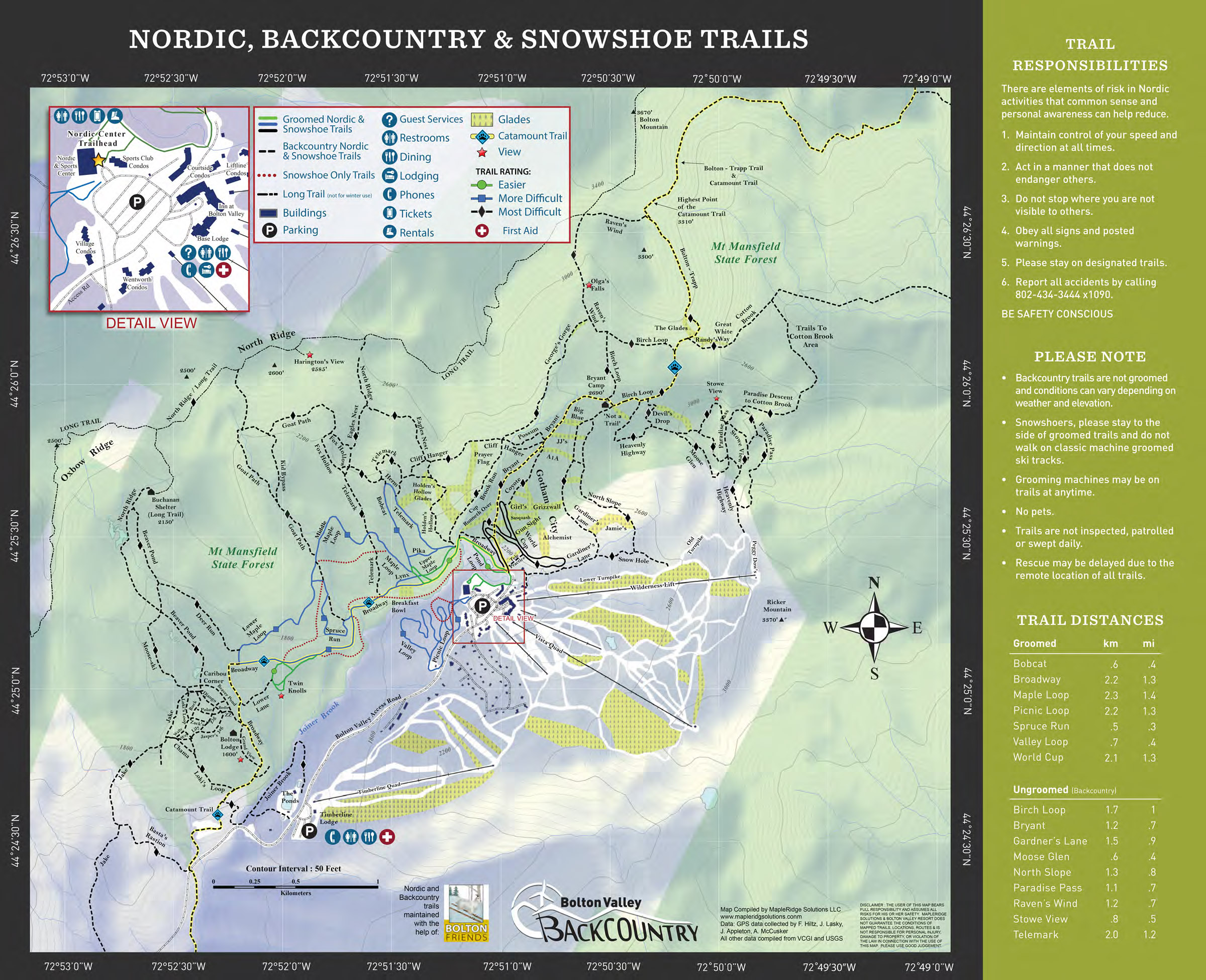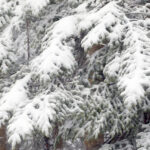
When I left home this morning, I’d packed an assortment of skis on the roof rack because I wanted to be ready to roll with whatever Winter Storm Tormund decided to throw at us for the next rounds of snowfall. Full fat Teles were definitely the call for ski touring at Timberline this morning, and with the snowfall continuing throughout the day, stopping off for some lift-served turns this afternoon seemed like a good way to mix things up and take advantage of the nicely shifted schedule that Bolton is now offering. This afternoon before heading home from Burlington, I sent out a text to the family letting them know that I was heading to the mountain, and to see if anyone wanted to meet up for some turns if they were going to be there. Erica had let me know that Dylan might be heading up for some Friday afternoon turns, so I’d been watching my phone for an update about his plans. Low and behold, just as I’m heading down French Hill on I-89 in Williston, a red Subaru with a bunch of gear on the ski rack passes by on the left. It looked suspiciously like Dylan’s car, and before I knew it, I got a text indicating that he and his friends were right in front of me. Well, that settled that with respect to whether I’d be able to meet up for turns!

It was raining steadily as we drove through the lower valleys on our way to the mountain, and naturally we hoped that meant there was some nice snowfall occurring at elevation. Indeed, the snow line was pretty low, switching quickly to snow before we even hit 1,000’ on the Bolton Valley Access Road. Up in the Village, it was snowing hard – much harder than what I’d encountered when I’d been out ski touring this morning. The resort was busy with visitors, but there were enough people coming and going this afternoon that we were quickly able to get a couple of parking spots right near each other in the top row of the main lot.
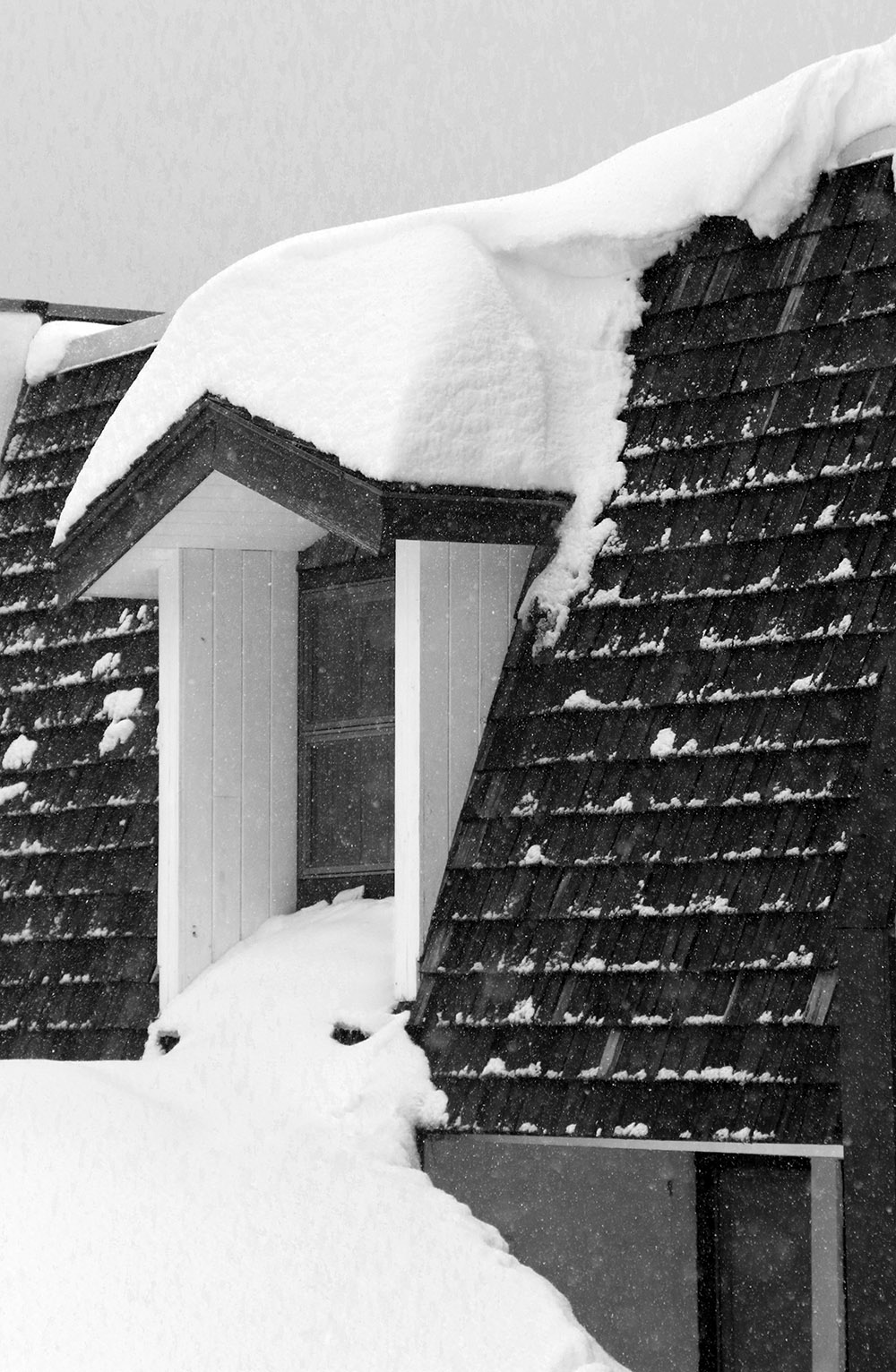
Based on what I was expecting in terms of snow and powder conditions, I grabbed my fat alpine boards for the session, since I knew we’d be encountering a lot more tracked conditions in all the dense new snow, and I figured we’d take full advantage of the opportunities the resurfacing would give us to jump into steep terrain.
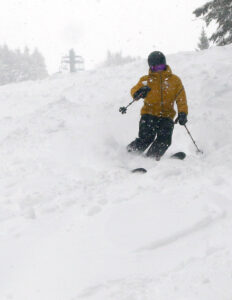
Main lift service for the afternoon was off the Vista Quad, so we hit a bunch of fun, steeper terrain like Vista Glades and Vermont 200 that made good use the resurfacing. Vista Glades was excellent, with all its stumps, rocks, ledges, bumps, and whatever other obstacles it contains well buried under a deep base and the thick layers of fresh snow. It offered lots of swooping and rolling terrain that made for a great ride. Even at higher elevations, the snow was a bit denser than what I’d encountered in my morning tour due to the warming of the day. Now that we were rolling into the second day of the storm cycle, plenty of folks had obviously been out enjoying the systems bounty, so we were mostly skiing tracked and packed snow, but it was skiing beautifully. The higher you went, the drier the snow was, but it was still quite decent down to even 2,000’. We did jump into some untracked areas of powder as well, and that snow was certainly skiing denser than it had in the morning, but it was still plenty dry for some nice powder turns.






























